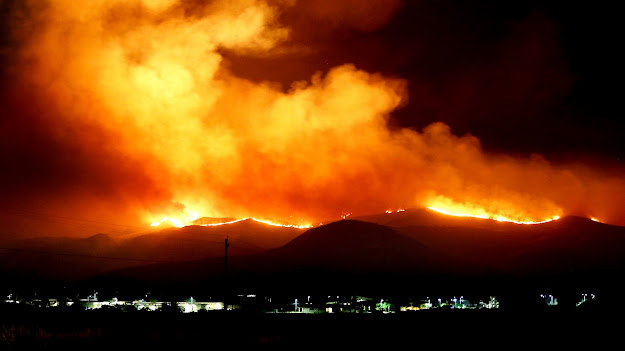 |
| Wildfire - Image by skeeze from Pixabay |
1. Climate change drives wildfires primarily by drying things out, allowing fires to burn hotter, faster and bigger; as temperatures rise, evaporation increases, leaving less water available for plants
2. Lightning strikes has ignited hundreds of wildfires
3. Decrease in the amount of moisture in the air (vapor pressure deficit) further drying out vegetation
4. Drier vegetation changes the character of wildfires, producing more extreme fire behavior, faster rates of fire spread, larger fires in general, making them harder to fight and having a different effect on ecosystems
5. Wildfire attribution is particularly complicated, because unlike hurricane or flood events, direct human influence including land management and accidental ignitions is also a major contributing factor
6. Shift in the timing of seasonal weather patterns, including delaying rains, pushing the fire season later into the year increases the overlap of summer dryness and fall winds
7. World continues to warm and the fires rage hotter and bigger each year, all needs to figure better ways to live with and adapt to the fire season that includes better forest management
Comments